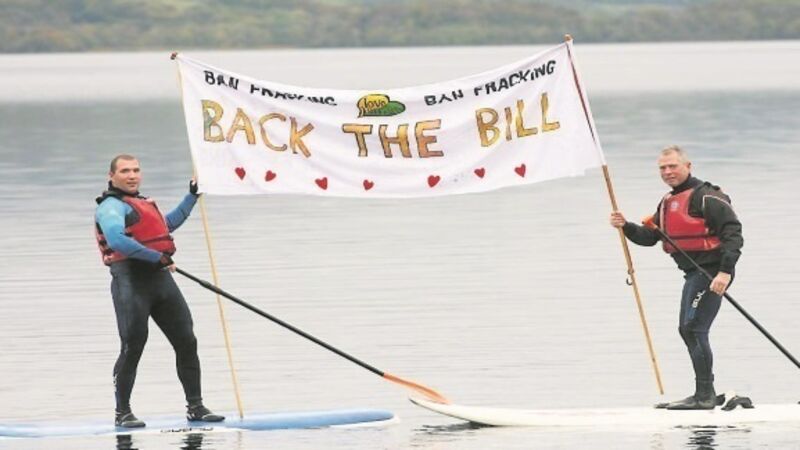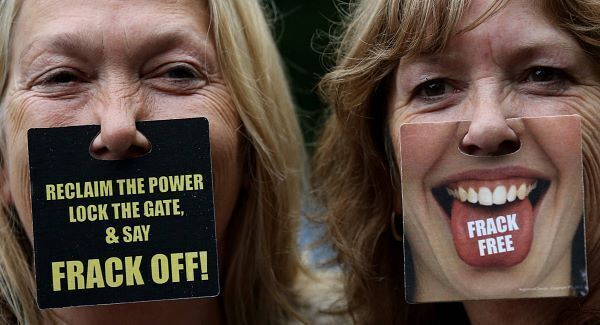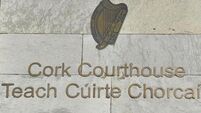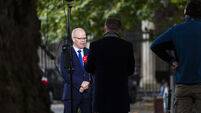With no established industry, let’s ban fracking before it begins

IT LOOKS as if the Dáil will today debate banning fracking on Irish soil and in its internal waters prior to a vote next Thursday that will probably be a “Yes”.
The Prohibiting of the Exploration and Extraction of Onshore Petroleum Bill 2016 is proposed by Fine Gael TD for Sligo/Leitrim, Tony Mc Loughlin. It has the support of most of the opposition and, it seems, most of the Government.
That’s good. Hydraulic fracturing to extract oil and gas from “shale rock, tight sands and coal seams”, as the Bill says, is controversial for lots of reasons. It is ugly. It can be unsafe. It is not properly regulated.
A new report commissioned by the Sustainable Water Network (SWAN) from six independent expert consultants, argues strongly that fracking can contaminate our water in several ways. First, the fracturing of the rock to get at the shale layers may allow contaminant gas and fluids to leach towards our freshwater. This will occur less or more depending on the structure of the rock in a particular area, with limestone karst being a particular concern.
It is estimated internationally that 6% of the wells the frackers bore through the rock will leak. The SWAN report points out that if only 1% of the possible 16,000 Irish wells leaked that would still be 160 wells. The wells are meant to be encased in cement so that leakage does not occur. But the sealing of the wells is frequently imperfect and indeed one in five US states does not requires the concrete casing of the wells to be tested before the fracturing process begins.
Sometimes cement is not applied or is not applied properly and sometimes changes in pressure and temperature crack existing cement. The stuff that leaches through the walls of the wells includes the fluid used to assist the fracturing which includes acids, alcohols, and hydrocarbon mixtures some of which, according to the SWAN report, are “hazardous to human and environmental health”. Then there is the fluid which occurs naturally in the shale but needs to stay where it is because it can contain high concentrations of chlorine, bromide, sodium, strontium, arsenic, iron, and manganese as well as high concentrations of naturally occurring radiation.

And there’s the wastewater which is salty and has hydrocarbons, silts, clays and process additives in it. We simply do not know what we would do with this stuff which threatens the purity of our surface waters and ground waters. If it contaminated our freshwater rivers, lakes, and wetlands it would change their nature, making them less able to host plant and bird life. The freshwater might also become more acid in nature, meaning contaminant metals would dissolve in it more easily and nutrients such as phosphorus, nitrogen, and carbon would be less available to aquatic life.
There’s also what’s left behind after the gas has been had. If the well sites aren’t properly plugged with cement there’s a risk that methane and fracturing fluid will leach into local freshwater. You can get soil erosion which turns up as silt in local rivers and streams. In Pennsylvania there have been cases of abandoned wells which were sold off to smaller enterprises who declared bankruptcy, leaving no-one clearly responsible for picking up the tab “after the goldrush”.
That wouldn’t happen here, would it? Not with what the report calls the “vast array” of bodies which would be involved if the current moratorium on fracking were to be lifted: the Departments of Energy and Environment, the Commission for Energy Regulation, the Environmental Protection Agency, the relevant local authority and An Bord Pleanála, making a co-ordinated planning response all-but impossible.
There is also an inadequate EU legal framework, which was constructed before fracking was envisaged and which therefore has gaps in relation to environmental assessment and requirements for monitoring. In plain terms it is unclear whether proposed fracking enterprises would be subject to mandatory Environmental Impact Assessment or Strategic Environmental Assessment, exposing the taxpayer to obvious risk.
The SWAN report identifies environmental risks in both of the sites in which exploration licences were granted by the last government in 2011: the Northwest Carboniferous Basin (affecting Donegal/Leitrim/Sligo) and the Clare Basin. It points to possible degradation of freshwater systems in Co Clare such as Tullagher Lough and Bog, Farrihy Lough, Poulnasherry Bay, the Lower River Shannon Special Area of Conservation, and the White Strand/Carrowmore Marsh.
All this is very fine and well. It’s great to see so much of Government and Opposition pulling together to protect the birds and the bees, not to mention us. But the truth is that banning fracking is relatively easy. There is no established industry and people tend to be frightened of new practices.

What we need to see in this country to protect our environment is the same coming-together of Government and Opposition to ban old practices. Tony Mc Loughlin, the very Fine Gael TD who has brought this anti-fracking Bill to the floor of the house recently described the burning of turf as a “sustainable” way to heat rural homes on the floor of the same house. He was advocating for rural turf-cutters to be allowed to continue to cut turf for their own use because their needs had to be “balanced” against the dictates of the EU Habitats Directive.
NIMBY is easy. What’s hard is the radical change towards a low carbon economy to which this country is committed under the Paris Agreement.
Clearly, individual turf-cutters are not responsible for environmental degradation on the scale of Bord na Móna. But I haven’t heard Tony Mc Loughlin denouncing the fact that the Government is allowing Bord na Móna to keep on industrially cutting away our bogs until 2030 when there will probably not be any bogs worth cutting. Even after Bord na Móna has stopped cutting away bogs to fire electricity stations and make briquettes, it is not clear that they have any plans to stop making horticultural peat, which has already been legally curtailed in the UK.
Bogs grow by about one millimetre a year and we have bogs which are seven metres deep. They are natural “sinks” storing millennia of carbon and just cutting them away releases about as much carbon dioxide into the atmosphere as is released when we burn peat. It is an act of environmental sabotage. Yet Bord na Móna is still taking out full-colour advertisements featuring a hare on his hind legs with the slogan: “This land is his land. We never forget that.” And there isn’t a peep in the Dail.
Enough negativity. Today’s debate may show us that this Dáil can act to stop future environmental damage. Then let’s see it act to stop the damage which is already happening, due to land over-stocked with cattle, vehicles emitting diesel particles which kill people, and power and transport systems which threaten life on this planet.














